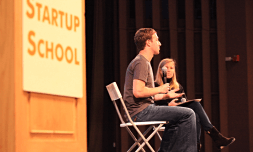In a study involving 35,000 Gen-Z members aged 13-24, about twenty six percent say they identify as nonbinary.
The number of young people identifying as nonbinary has grown and the use of pronouns ‘they/them’ is becoming more commonplace.
In fact, a recent poll found 35 percent of Gen-Z say they know someone who uses gender-neutral pronouns.
However, there remains widespread misunderstanding about the nonbinary community, their identifies, and the term itself.
A recent study conducted by The Trevor Project set out to gather knowledge about the diversity of the nonbinary community in the lead up to International Nonbinary People’s Day which took place on July 14th.
The Trevor Project is America’s leading organisation which offers support for LBGTQ people under the age of 25. It has provided crisis intervention and suicide prevention services to the community since its founding in 1998.
The Trevor Project’s definition of nonbinary is ‘a term used to describe people whose gender identity does not fit within the traditional construction of gender as a binary choice between exclusively male or exclusively female.’





















